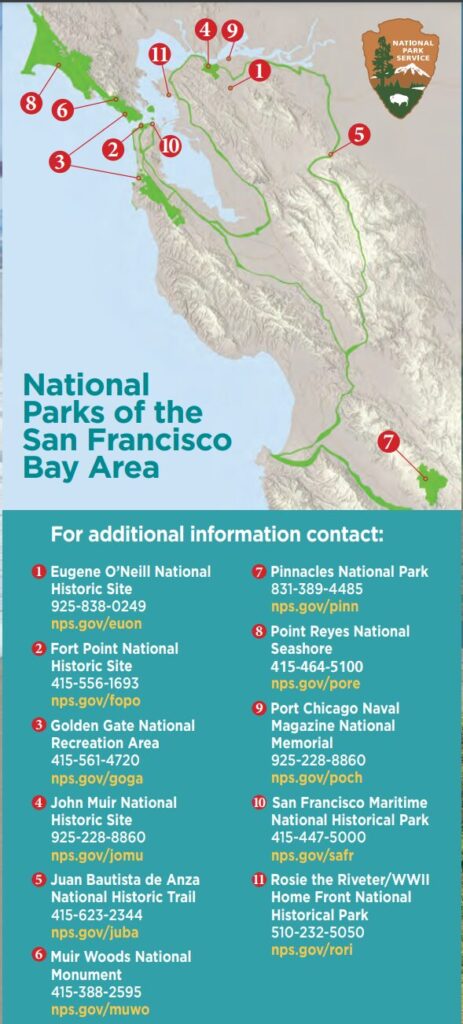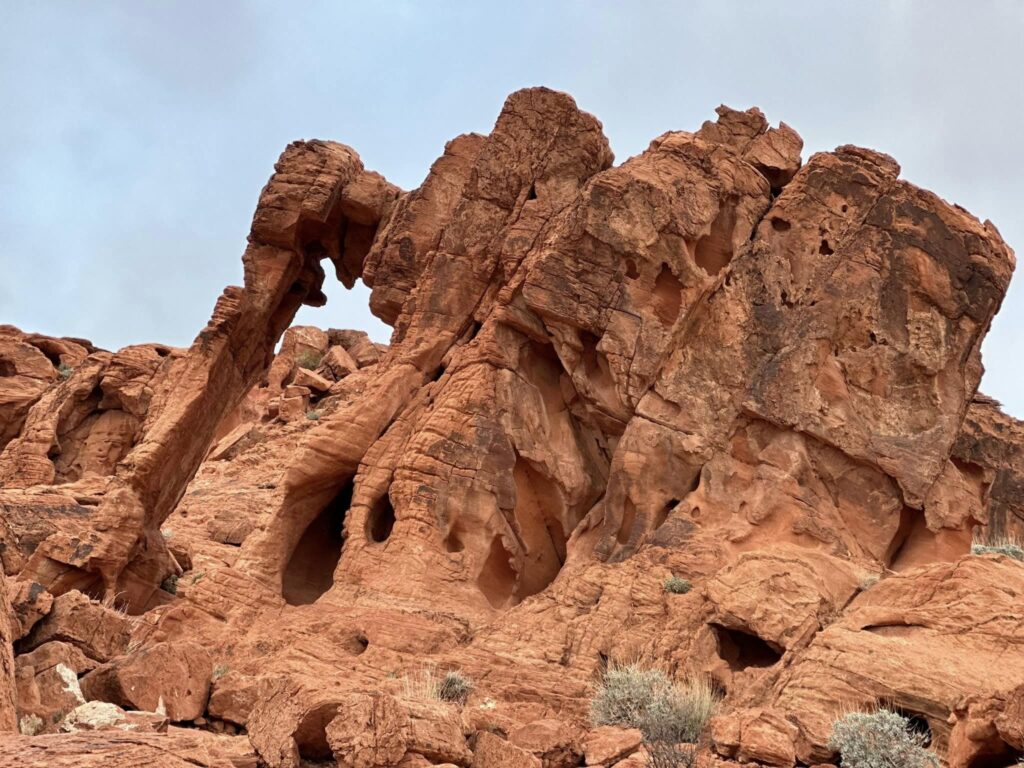Thinking of the City by the Bay, the first thing that comes to mind is probably not National parks, it wasn’t for me. When planning my most recent trip to the San Francisco Bay Area, I was surprised to find how many sites are preserved by the National Park Service for outdoor recreation, history preservation, and conservation.
San Francisco’s most well-known attractions, such as the Golden Gate Bridge and Alcatraz, are within National Park boundaries. These parks also contain rigged coastlines, majestic redwood trees, many kinds of wildlife, and several historically important places in America.
In this article, we will explore the 11 National Park Sites (meaning the sites are managed by the National Park Service) within the San Francisco area that are accessible within two hours’ driving time of the city or less. All the places in this post can be reached by taking a day trip from the city. While many major National Parks, such as Yosemite, Death Valley, and Redwoods, can be reached from the city, they would require quite a bit more time to reach, so I have reserved them for another post.
Table of Contents
ToggleSo what is a National Park?
Well, this can be very confusing; just as the National Parks vary greatly, so do their designations. Typically, National Parks cover a large area and have various resources, land, or water to protect. National Monuments generally are smaller and don’t cover such a diverse amount of resources. In addition to those designations, there are also national preserves, national memorials, national historic sites, national seashores, and national battlefield parks, to keep it confusing. The National Park service manages all of these sites.
This map of the National Parks could be in better order based on location, but it is one of the better maps I could find outlining the park units within the San Francisco Bay Area. Each park will be covered with the number corresponding to the map to ensure everything is clear. One of the great things about many of these parks is that they are free to access. I encourage anyone who plans to visit more than three park sites within a year to get an America the Beautiful Pass. My pass paid for itself within a weekend!

Best National Parks Near San Francisco
1) Eugene O’Neill National Historic Site
This site is notable because Eugene O’Neill was America’s only Nobel Prize-winning playwright. He lived at this home, known as the Tao House, from 1937 to 1944. While he lived there, he wrote some of his most famous plays, including “The Iceman Cometh,” “Long Day’s Journey Into Night,” and “A Moon for the Misbegotten.”
Explore the house with guided tours that provide insights into O’Neill’s life, his work process, and the historical context of his time at Tao House. The surrounding grounds offer beautiful views of the San Ramon Valley and the nature that inspired him.
In addition to the Tao House you will find various structures from the time, historic walking paths, as well as hiking and mountain biking trails in the Las Trampas Regional Wilderness.
The site is free to visit but only accessible by National Park Service Shuttle. Advanced reservations are required to visit and are available Wednesday-Sunday from 10 AM to 2 PM. Shuttle pick-up is in Danville at The Museum of the San Ramon Valley.
Distance from San Francisco: 31 miles
Entrance Fee: Free
2) Fort Point National Historic Site
This historic site predates the Civil War and was built between 1853 and 1861. It sits at the south end of the Golden Gate Bridge and is accessible via public transportation. The fort was built to protect the San Francisco Bay from attack, although it never fired a shot in combat.
The fort has been preserved for its historical significance. The fort is best known today for its picturesque setting beneath the Golden Gate Bridge, a symbol of the San Francisco Bay Area. The bridge’s construction in the 1930s included efforts to save the fort from demolition, integrating it into the bridge’s design.
Now a National Historic Site, Fort Point offers visitors a glimpse into military history with its well-preserved architecture, cannon displays, and historic exhibits. The site also provides stunning views of the Golden Gate Bridge and the San Francisco skyline, making it a popular spot for photography, history enthusiasts, and tourists.
It is open on the weekends, Friday through Sunday, 10 am-5 pm, from Fall through Spring, and typically five days a week in summer. Always double-check before visiting.
Distance from San Francisco: 0 miles
Entrance Fee: Free; however, some tours may cost money
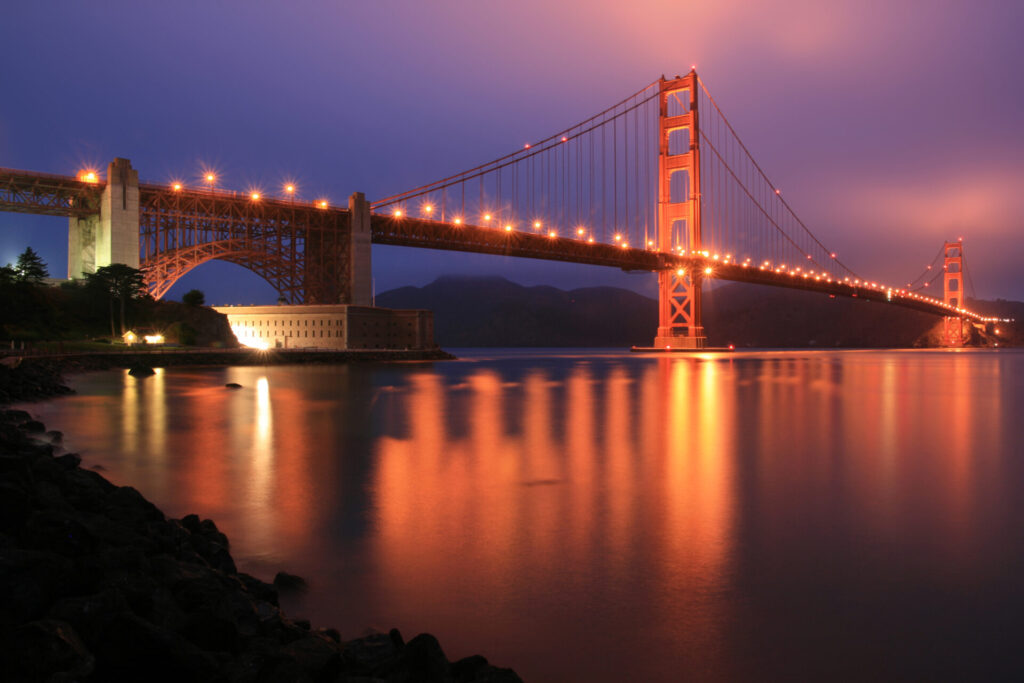
3) Golden Gate National Recreation Area (GGNRA)
The GGNRA is large and encompasses over 80,000 acres and several parks, beaches, and historical sites. Some of the most popular sites within the park include Alcatraz, Muir Woods and Ford Point. The park expands both north and south of the Golden Gate Bridge.
Visitors to the GGNRA can enjoy hiking, biking, bird-watching, and picnicking in natural settings that offer breathtaking views of the Pacific Ocean and San Francisco Bay. The park’s historical sites, including military forts, lighthouses, and the remnants of Native American culture, offer a glimpse into the area’s rich past.
The Golden Gate National Recreation Area is not only a haven for outdoor enthusiasts and nature lovers but also serves as a vital educational resource, offering programs that foster an appreciation of environmental conservation, historical preservation, and the natural beauty of the San Francisco Bay Area. It is one of the most popular National Parks in the country, attracting millions of people each year.
Distance from San Francisco: 0 miles
Entrance Fee: Free
Parks Near Golden Gate Bridge within GGNRA
Alcatraz Island
Alcatraz Island is one of the most visited national Parks in San Francisco. Discover the complex history behind the island, from the military fort to the maximum security penitentiary. While open as a prison, it housed some of America’s most infamous prisoners.
Visitors can explore the remains of the prison through a self-guided audio tour that includes recordings from former guards and inmates, giving a vivid sense of life in the prison.
The island offers stunning views of the San Francisco skyline, the Golden Gate Bridge, and the surrounding bay, making it a compelling destination for those interested in history, social justice, and natural beauty.
You’ll need to book ferry tickets to reach the island; reservations are highly encouraged. Tickets become available 90 days in advance, including an audio tour, ferry transportation to and from the island, and time to explore. The ferry leaves at Pier 33, and parking is limited nearby, so public transportation is recommended. Different tour options are available, including ranger-led tours while on the island.
Entrance Fee: The America the Beautiful pass does not work here. You must pay for a ferry ticket to visit the island.

Muir Beach
It is free to park here. With a quick and easy walk, there is access to the beach, with lovely views of the ocean crashing on the shore and nearby rocks. Muir Beach is relatively small but offers a unique blend of natural attractions, including a sandy shore, tide pools teeming with marine life, and the adjacent Muir Beach Overlook, which provides stunning views of the Pacific Ocean and the rugged California coast.
If you are feeling up for hiking, there are trails from the parking lot, including those leading to the Muir Woods National Monument, renowned for its ancient coastal redwoods. I did not choose to do any hiking other than the walk to the beach. It’s a nice place to sit, hear the waves crash upon the rocks, and put your feet in the sand.
Entrance Fee: Free
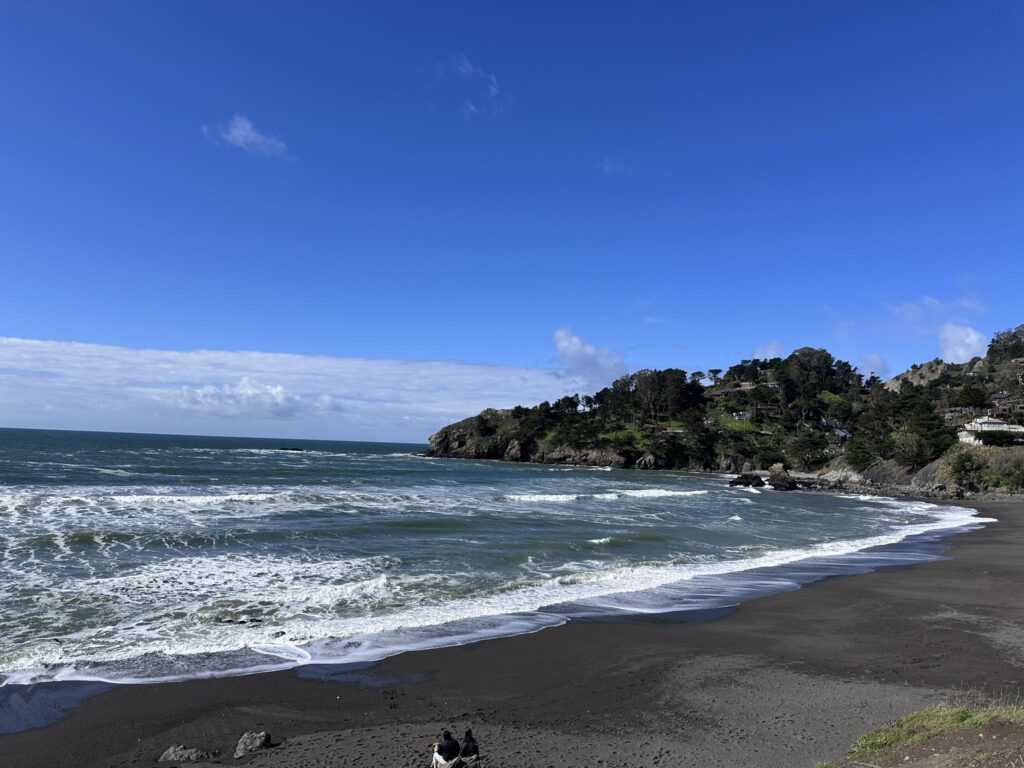
4) John Muir National Historical Site
John Muir is the father of the National Park Service. Through his extensive efforts as a naturalist and conservationist, he fought to protect many places people still love visiting, such as the Grand Canyon, Yosemite, and Mt. Rainier.
The historic site includes the home he lived in with his family until his death and the surrounding 325 acres. When visiting, you can tour his meticulously preserved home, which offers a glimpse into his personal life, family, and work. Trails around the property offer opportunities for walking and reflection in settings similar to those that inspired Muir’s lifelong commitment to conservation.
This site serves not only as a tribute to John Muir’s contributions to environmentalism and his role in the creation of several national parks but also as an educational center. It aims to inspire current and future generations to continue Muir’s legacy of environmental stewardship and appreciation for the Earth’s natural beauty.
The site is open from 10 am to 5 pm seven days a week.
Distance from San Francisco: 30 miles
Entrance Fee: Free
5) Juan Bautista de Anza National Historic Trail
This historic route commemorates Juan Bautista de Anza’s journey from Mexico to the San Francisco Bay Area. The trail spans approximately 1,200 miles and is managed by the National Park Service. It crosses diverse landscapes, including deserts, mountains, and coastal areas, offering visitors a chance to experience the challenges and landscapes encountered by Anza and his group.
In the San Francisco Bay Area, the trail provides educational opportunities and recreational activities. Its marked hiking and biking paths allow modern-day explorers to trace the footsteps of the early settlers. Interpretive signage and guided tours along the trail offer insights into the historical significance of the expedition, the interactions between the Spanish explorers and Native American tribes, and the impact of European settlement on the region.
Distance from San Francisco: There are multiple sites of interest, including Golden Gate Park and the Presidio of San Francisco, which are included in the trail.
Entrance Fee: Free
6) Muir Woods National Monument
Muir Woods is part of the GGNRA area. The park was established in 1908 to preserve over 500 acres, including 240 acres of old-growth redwoods. Redwoods are prehistoric trees that only remain in three places on Earth but are among Earth’s oldest and tallest trees.
The park’s main attraction is the redwood trees, which thrive in the coastal climate. The park is accessible to all ages and fitness levels via the main boardwalk trail, which varies in length depending on how far you want to go. I enjoyed this path after a day of strenuous hiking. The park’s visitor center provides exhibits on the area’s history, the ecology of the redwoods, and the efforts to preserve these magnificent trees for future generations.
Reservations must be made in advance and cost $9.50, which must be paid at the time of the reservation.
Distance from San Francisco: 17 miles
Entrance Fee: 15$ per person or America the Beautiful Pass plus reservation fee

Closest National Park to San Francisco
7) Pinnacles National Park
Pinnacles is one of the newest National Parks, established in 2013; however, it has been a National Monument since 1908. The park is renowned for its distinctive rock formations, towering spires, and deep canyons, resulting from millions of years of volcanic activity, tectonic movements, and erosion.
Unlike many National Parks, the East and West Entrances are not connected via road due to rock formations within the park. I reccommend going to the East side entrance as it is more developed, including a tiny store at the campground.
With its unique geological features, the park includes various ecosystems, flora, and fauna, including the California Condor. It is a paradise for outdoor enthusiasts, with over 30 miles of trails leading to spectacular views, rock climbing areas, and talus caves.
Distance from San Francisco: East Entrance 125 miles 2h 10min
West Entrance 145 miles 2h 27min
Entrance Fee: 30$ per car or America the Beautiful Pass
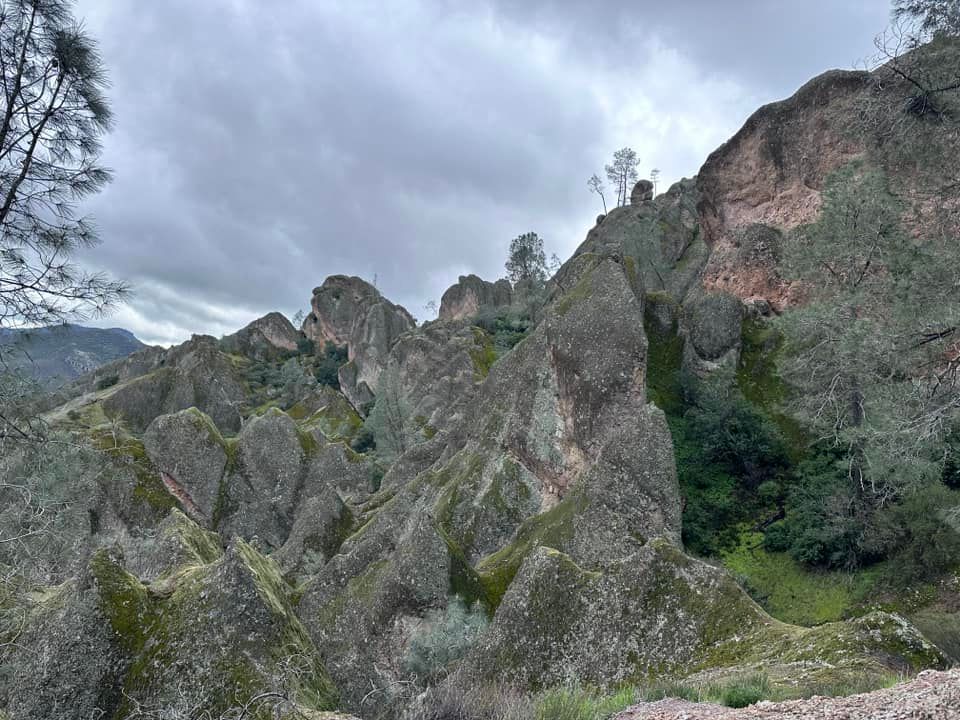
8) Point Reyes National Seashore
Point Reyes National Seashore is a short drive north of San Francisco. Established in 1962 to preserve its unique ecosystem, the area is renowned for its stunning coastal landscapes, rich wildlife, and various ecosystems, ranging from sandy beaches to dense coastal forests.
The region is a critical habitat for marine life, including elephant seals and whales. It is also a haven for wildlife enthusiasts, offering the chance to see elephant seals, tule elk, and numerous bird species, including the threatened snowy plover.
The park offers various outdoor activities, including hiking, biking, camping, and bird-watching. Its extensive network of trails leads visitors through its varied landscapes, offering challenging hikes and leisurely walks with breathtaking views of the Pacific Ocean.
Distance from San Francisco: 38 miles
Entrance Fee: Free
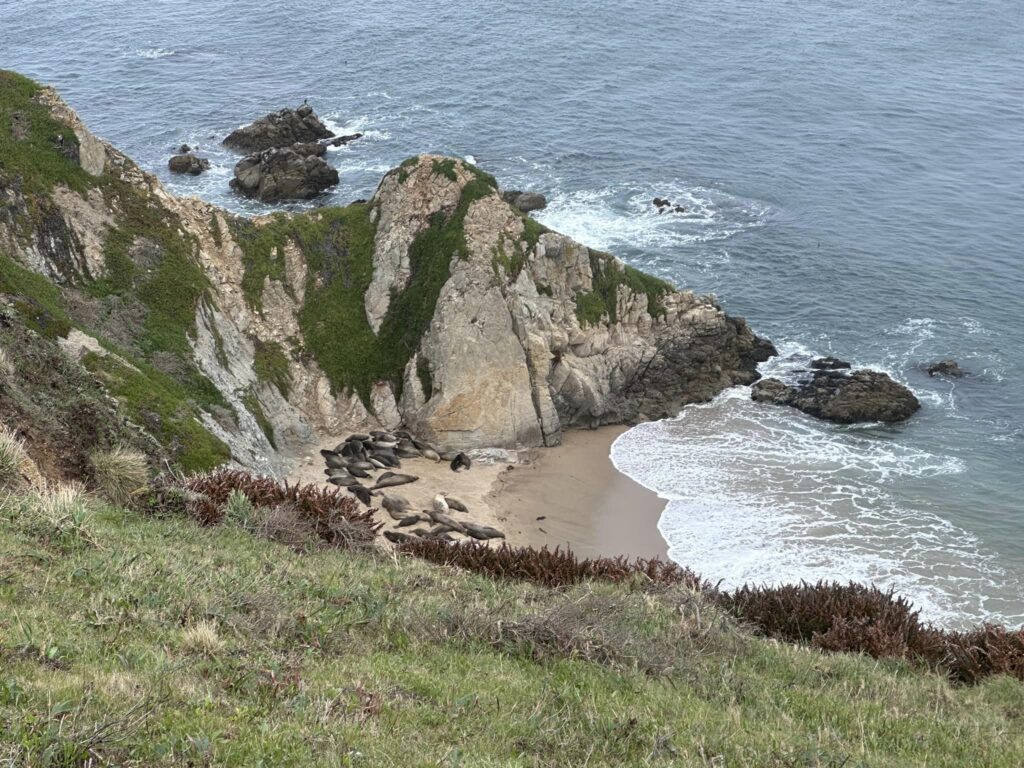
9) Port Chicago Naval Magazine National Memorial
This memorial serves as a tribute to one of WWII’s worst homefront disasters, where 320 Americans were killed while loading ships with ammunition and bombs for the Pacific theater exploded, most of whom were African American munitions handlers. The explosion not only devastated the naval facility but also significantly impacted the surrounding community and highlighted issues of racial inequality within the military.
This incident and the subsequent trial brought national attention to the practices of segregation and discrimination in the military, contributing to the desegregation of the U.S. Navy and, eventually, the entire armed forces.
Port Chicago Naval Magazine National Memorial is on an active military base, so access requires advanced planning and reservations, which must be made at least two weeks in advance. These tours offer insights into the causes of the explosion, the experiences of the men who worked there, and the impact of the disaster on military and civil rights policies. The Port Chicago Naval Magazine National Memorial stands as a testament to the importance of remembering the lessons of history and the ongoing struggle for equality and justice.
Visitors are shuttled from John Muir National Historic Site, which leaves at 12:30 PM on tour dates. Tours are only available on Thursdays, Fridays, or Saturdays and take about an hour and a half.
Distance from San Francisco: 30 miles
Entrance Fee: Free
10) San Francisco Maritime National Historic Park
San Francisco Maritime National Historical Park is located in the Fisherman’s Wharf neighborhood of San Francisco. Established in 1988, the park encompasses a fleet of historic vessels, a maritime museum, a research library, and a visitor center. It offers a comprehensive look into the maritime history of the United States, with a particular focus on the Pacific Coast and San Francisco Bay.
The park’s centerpiece is the historic fleet moored at Hyde Street Pier. This collection includes several National Historic Landmark ships, such as the Balclutha, a square-rigged sailing ship from 1886; the Eureka, a steam ferryboat; and the Hercules, a steam tug. These vessels, among others, offer visitors a tangible link to the past, allowing them to step aboard and experience the life of sailors, fishermen, and maritime workers from different eras.
This historic maritime park is close to Fort Point, about 4.5 miles away, and best accessed via public transportation as parking is difficult to find. The visitor center is open daily with expectations for three major holidays.
The park provides a glimpse into the maritime past. It offers spectacular views of the San Francisco Bay, making it a popular destination for both history buffs and those simply looking to enjoy the area’s scenic beauty.
Distance from San Francisco: 0 miles
Entrance Fee: 15$ per person or America the Beautiful Pass

11) Rosie the Riveter/WWII Home Front National Historical Park
Rosie the Riveter/WWII Home Front National Historical Park serves as a tribute to the men and women who labored on the home front and a reminder of the social changes and advancements in civil rights that were accelerated by the war. The park offers educational programs, guided tours, and special events that engage the public in the history and legacy of the World War II home front, emphasizing the themes of teamwork, innovation, and the capacity of citizens to work together for the common good.
The visitors center is a great place to start and focus your trip. Inside, you will find interactive exhibits, films, and artifacts that tell the stories of the home front heroes and their contributions to the war effort.
The park encompasses several historical sites and facilities in Richmond that played significant roles during the war, including shipyards, factories, and community buildings. Among its notable features is the SS Red Oak Victory, a restored Victory ship built in the Richmond Kaiser Shipyard.
Distance from San Francisco: 19 miles
Entrance Fee: Free

SS Red Oak Victory
Tours of the ship are only available on Sundays. The drive to the shipyard, which is preserved to the time, is about a 15-minute drive from the visitor center. SS Oak Victory is the last remaining vessel of the 747 built in the Kaiser Shipyards during the war and one of the last surviving Victory ships. It is well worth the stop to appreciate the magnitude of the ship, the work put in by the home front workers, and what it is like aboard a ship.
Entrance Fee: 10-20$ depending on the tour you choose

Final Thoughts
The 11 National Park sites near San Francisco offer a rich tapestry of natural beauty, historical significance, and cultural diversity, making them prime destinations for day trips and extended exploration. On your next trip to the Bay Area, be sure to check out some of these sites, as there is something for everyone, from the history buff to the hiker to the explorer to the observer.
Have you been to any of these parks? Let me know in the comments.

